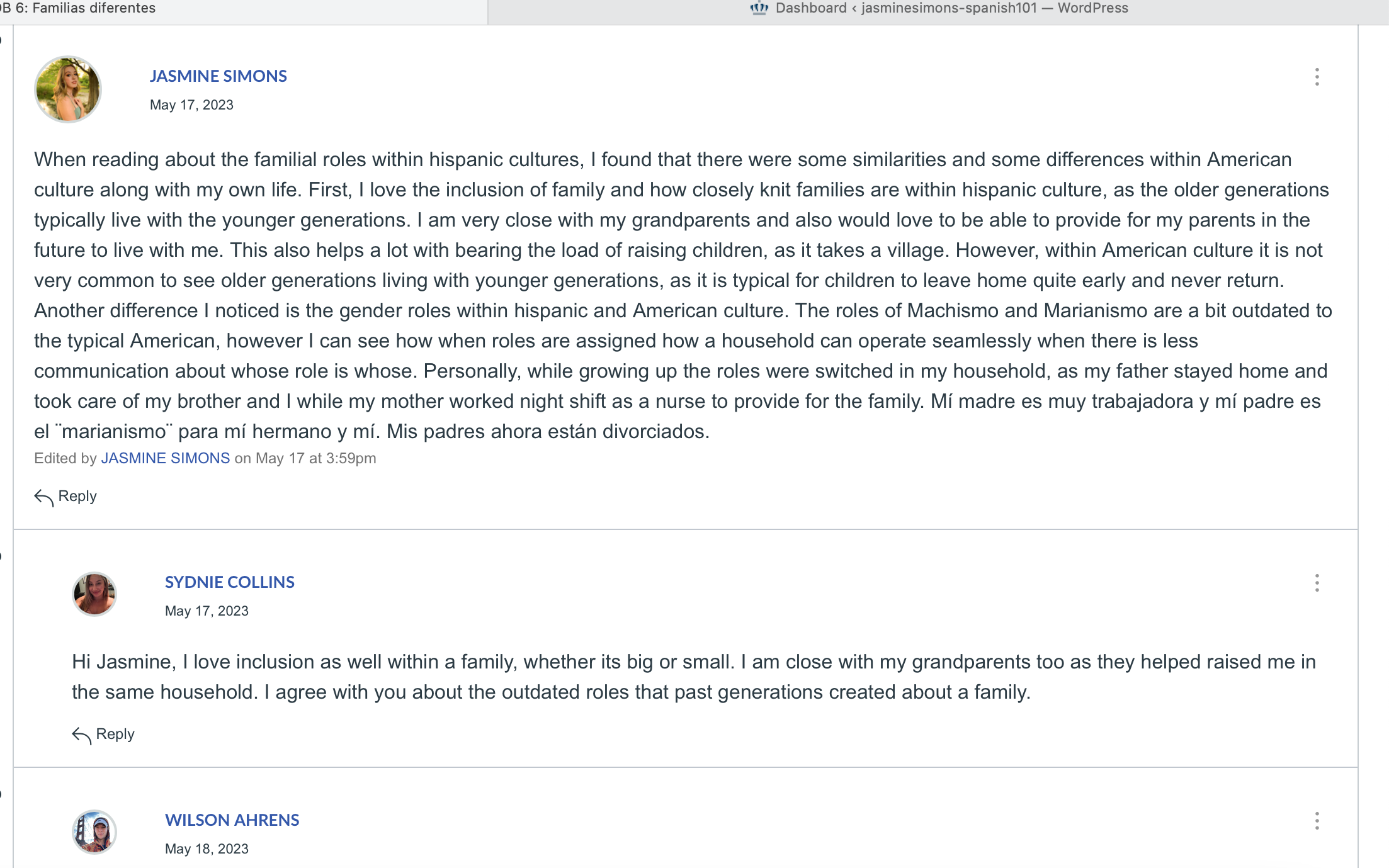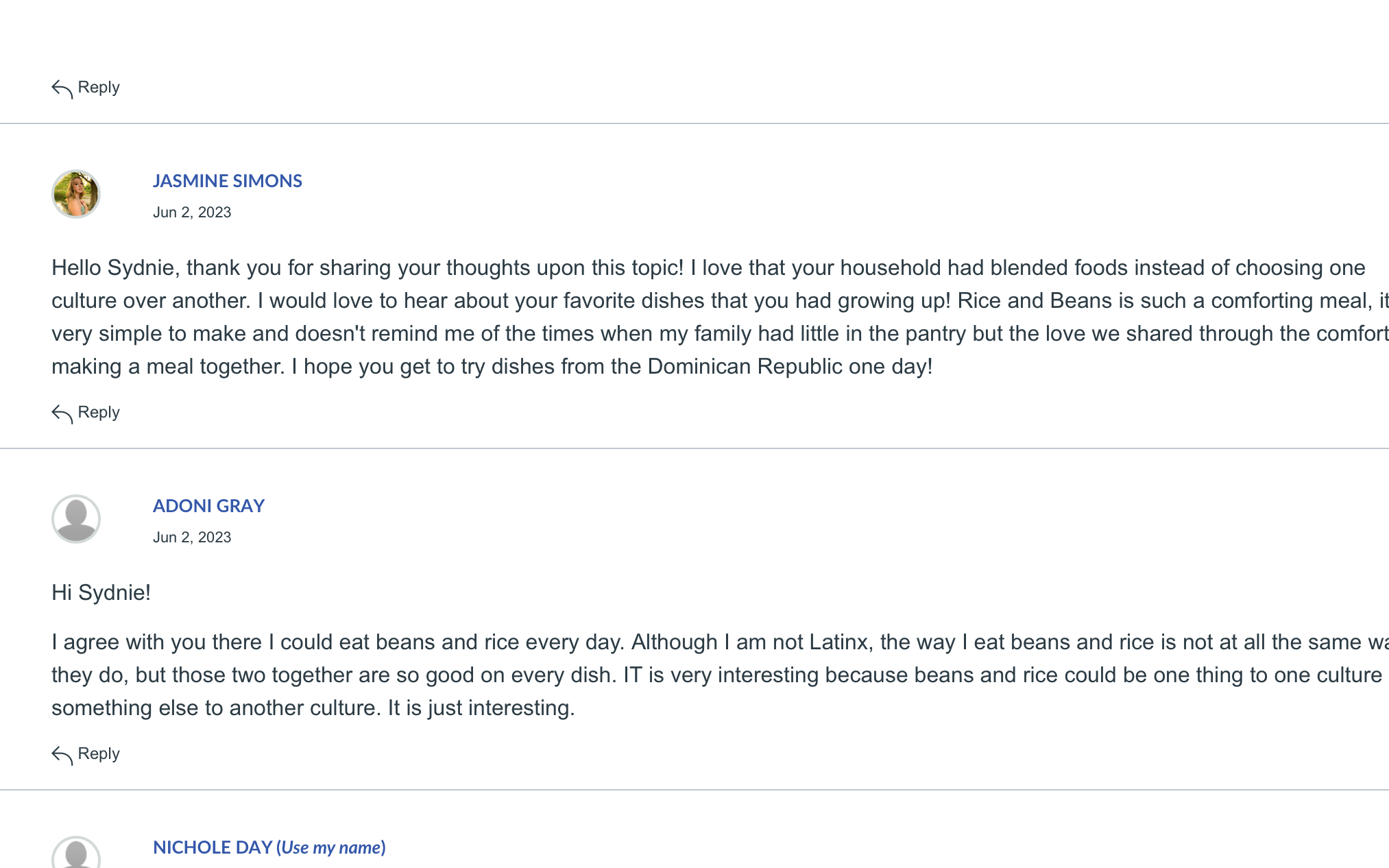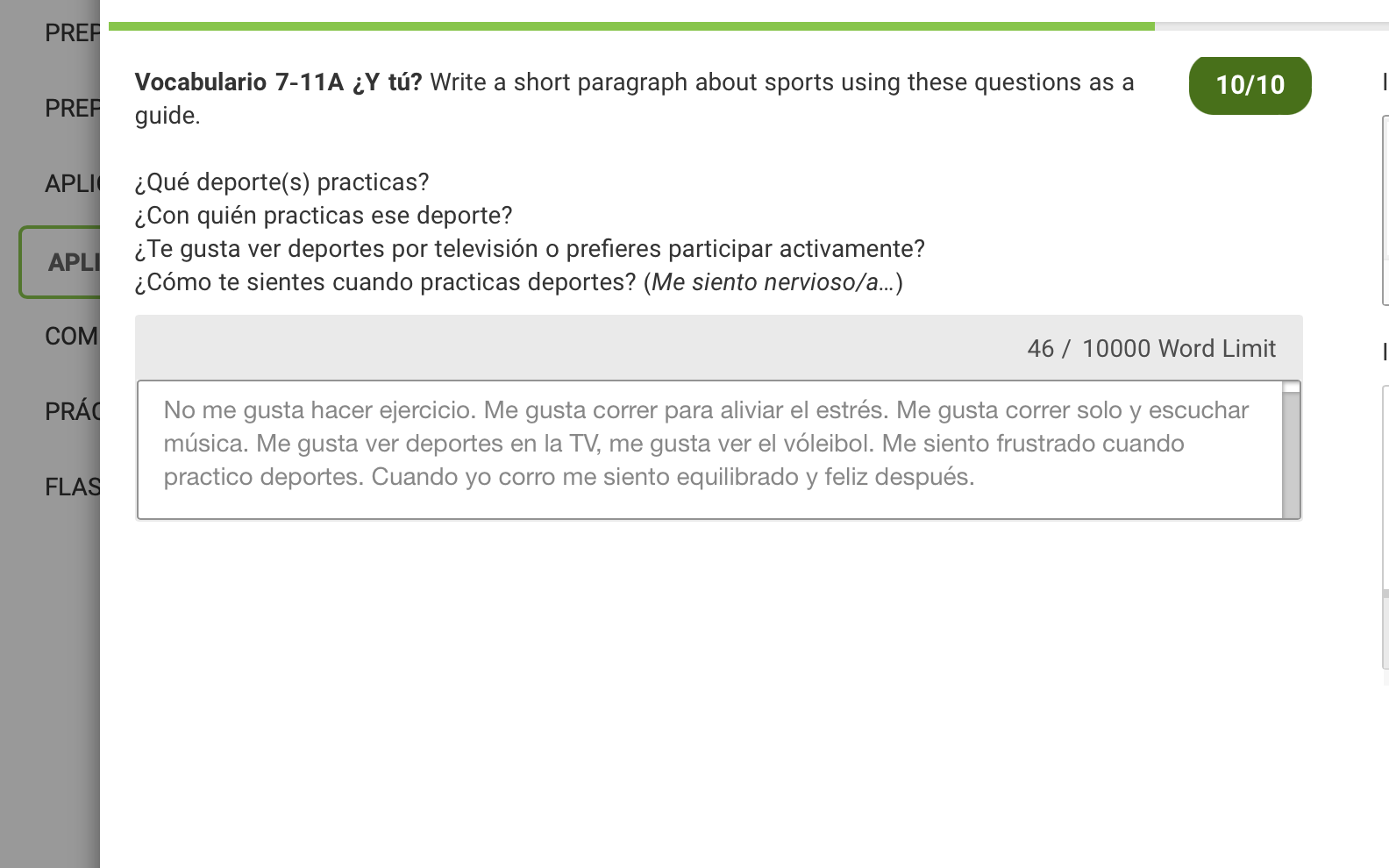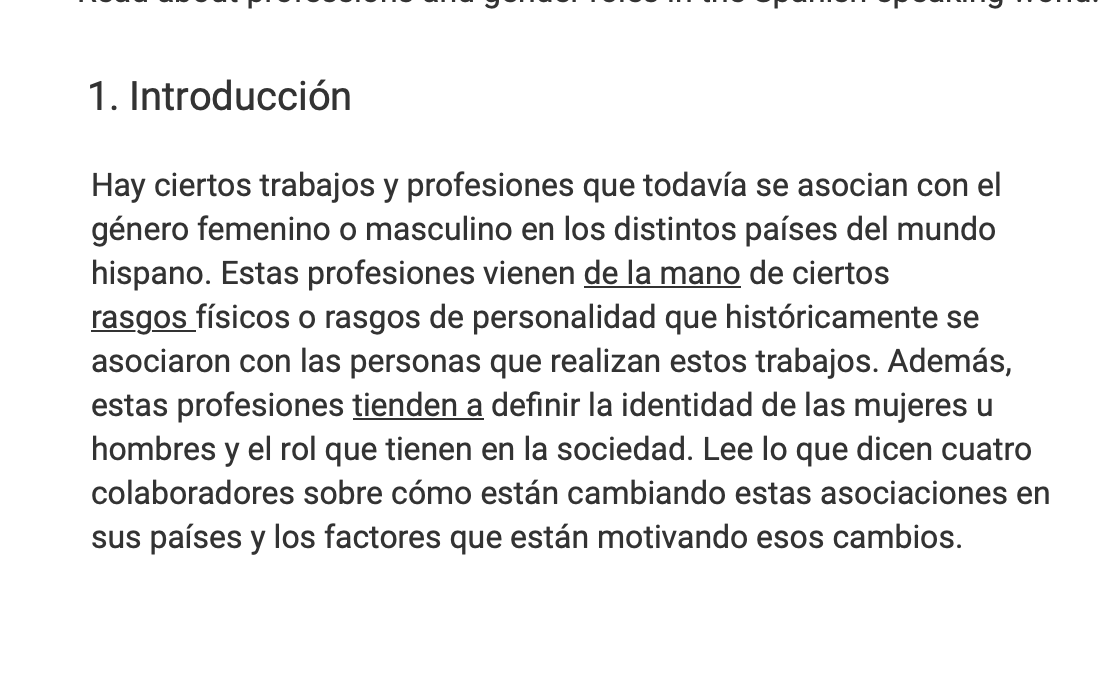Interpretive, Interpersonal, and Presentational Modes of Communication
Exploring Culture
Throughout the class of Spanish 102, there were various discussion boards used to explore culture and the perspectives of others around me. A video would be assigned upon the culture of a different country and classmates and myself would discuss the similarities and differences in a respectful manner.
This practice made me understand that there is not a necessary ¨right¨way of living. Everyone in different countries or even different counties of America live life in different little ways, but it is normal to the person that is doing their activities. This has impacted me and made become a much more well’ rounded understanding person overall. For example, the discussion about family that is shown challenged my mindset that gender roles should be challenged. This is because gender roles are still very apparent in hispanic cultures, however it is not to restrict one gender or another, it simply balances home life and ensures that home duties are equally balanced. Everyone ¨knows¨their role and tasks get completed due to this. Growing up in my home, there were not much gender roles, as my mother worked full time while my father stayed home to take care of us. Therefore, my father took on much of the burden of home tasks while my mother worked. My view of gender roles within the home has been challenged from this activity.

Engaging in Communities
Engaging in one’s community around them is vital to flourishing in society. Engaging with other humans is how we take in information and other’s perspectives. Exchanging ideas and forming opinions is how we become well-rounded more mindful human beings. This is crucial for not only connecting with one another, but also for people in powerful roles that must make decisions that affects hundreds to thousands of people.
I engaged within my own community by responding to other’s discussion boards about their ideas and perspectives upon a specific week’s topic. For instance, when learning about food in Spanish, the discussion was based around foods from different countries and what we would like to try. I found it interesting what people wanted to try or have had throughout their life time due to different cultural influences impacting their own lives.


Interpersonal Communication
The use of Spanish in a Spontaneous manner was encouraged throughout this class. Therefore, assignments such as TalkAbroad were encouraged. However, I felt myself becoming more and more confident speaking Spanish along with these assignments. I suddenly had the courage to communicate with some of my co-workers using my Spanish skills and using a mixture of both the words that we knew in English or Spanish. This created a line of open communication between us and now I continue working on my skills and learning new phrases due to them.
Not only did I connect with my immediate community through discussion boards, but also connected with others through the use of Talk Abroad. This platform gave me the opportunity to practice my Spanish speaking skills talking to a person from a hispanic country. While it was challenging to not only meet a new person, but also speak to them in a foreign language, I powered through and ended up enjoying my session both times. I was able to learn about someone in a different country from me and learn about how they lived and communicate using the skills I built through this class. This is where I learned cultural differences and similarities along with enhancing my “on-the-spot” thinking for Spanish as well.
Presentational Speaking
Below is an example of presentational speaking, where I record myself speaking, but there is not an interaction with another human being. This helps me enhance my pronunciation skills along with ability to speak in general.
Presentational speaking is different from interpretive listening or speaking, as I do not have the challenge of interpreting what another person is saying, either in real-time or in video. However, this provides another challenge of changing what I read into speech. As when I read information in my head, it is different from when I am actually speaking. It is easy to say words on paper as English or not add an accent, therefore when doing presentational speaking my skill of being able to switch over to “Spanish brain” is enhanced. I found that it is much easier to speak Spanish when I am thinking in Spanish, rather than in English and then translating it to Spanish in the matter of seconds within my brain. This causes much less “slip-ups” and allows for me to become creative with what I am saying using the vocabulary I know.
Presentational Writing
Throughout the semester various writing assignments were given through the textbook of Lingrolearning to enhance our vocabulary and grammar use.
Personally, the writing assignments were the hardest for me. This is because I often think of my answers in English and get a loss for words when I then have to think about my answer and put it in Spanish. This is because my English answers are often a lot more in-depth than my Spanish answers would be. This is why I now try and think in Spanish when completing assignments to try and eliminate this panic. I also found writing assignments the hardest because I found it difficult to remember where to put accent marks and often forget to conjugate a word a certain way. This again is a skill that is enhanced just by practice and trial and error. I always learn best from my mistakes and I have definitely made many when writing in Spanish.

Interpretive Listening
Below you will see one of the interpretive listening activities that I completed this semester. In this assignment I was tasked with listening to a video of the instructor and responding in an appropriate manner. This requires intense listening skills and ability to interpret what the instructor is saying while also responding in the correct manner to align with what the instructor will say next.
This type of assignment challenged my critical thinking skills and ability to listen closely to what is being said. What is challenging about this type of assignment is setting myself up to respond accurately to what will be said next by the video. For instance, the video I am responding to may just ask what my name is, but the next phrase begins with I am well, how old are you? Therefore, I must remember to respond to the first question and then ask the question that prompts the answer “I am well”, in Spanish of course. I found that rehearsing in this instance helped and this helped my recall memory as well. I believe that my speaking ability and confidence grows with each assignment completed, especially with the more detailed conversations.
Interpretive Reading
Throughout the semester, LingroLearning was used as the class textbook and was filled with plenty of interpretive reading assignments. While specific vocabulary was being taught, there were often prompts and quiz questions with words that I was not familiar with. This taught me the skill of being able to skim a paragraph and getting the main idea of the reading from the vocabulary I did know while slowly becoming accustomed to seeing words or phrases that I have not seen before. Context clues are very important when reading in this format and teach the student critical thinking skills.
When beginning this class, it was quite daunting to see an entire paragraph to read and understand. Just taking a look at a paragraph in a foreign language gave me a headache. However I dove right in and broke the paragraph down into smaller, more manageable chunks. Over time this process grew easier and I was skimming paragraphs and getting the main idea very quickly. I have learned that practice makes perfect and this is a skill that must be worked on relentlessly as one will only get better with time.
